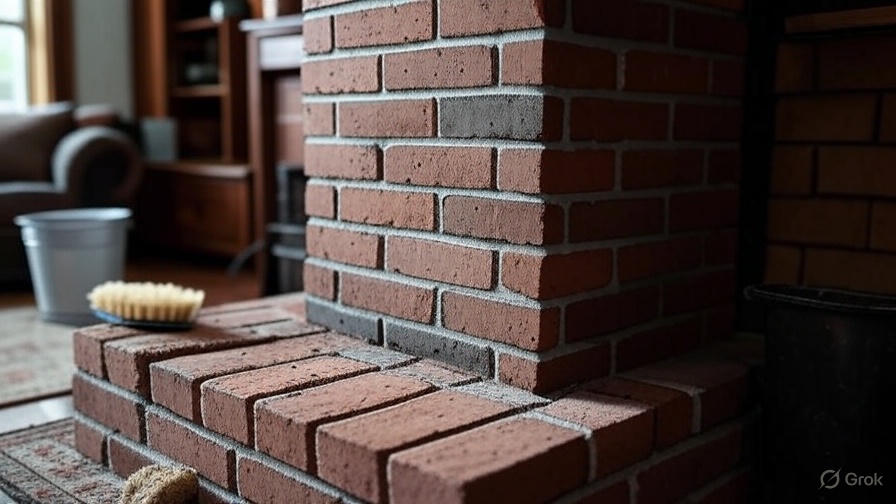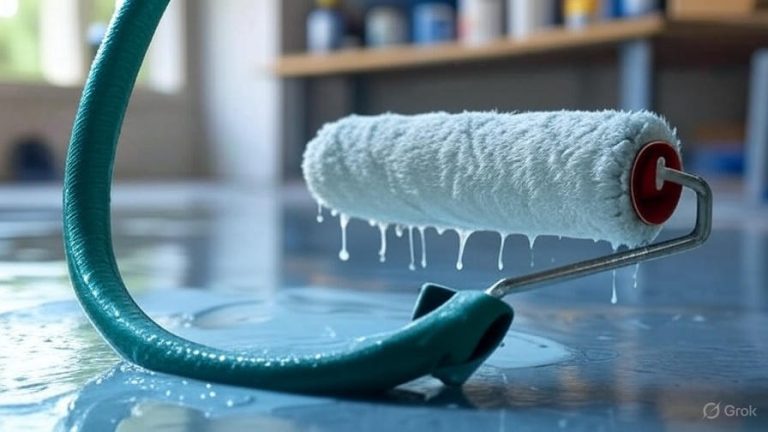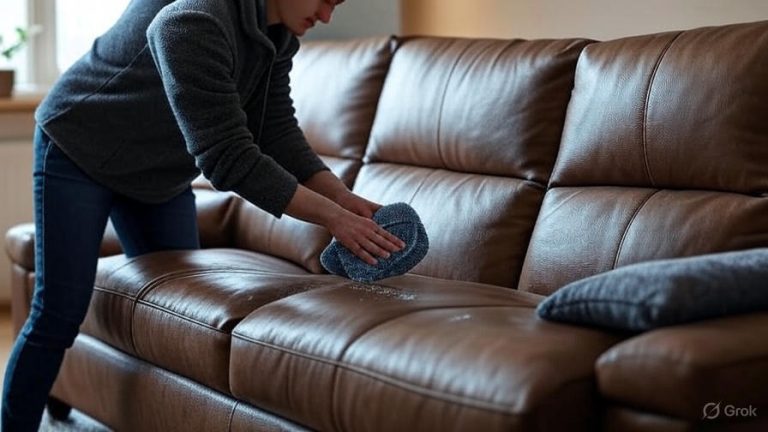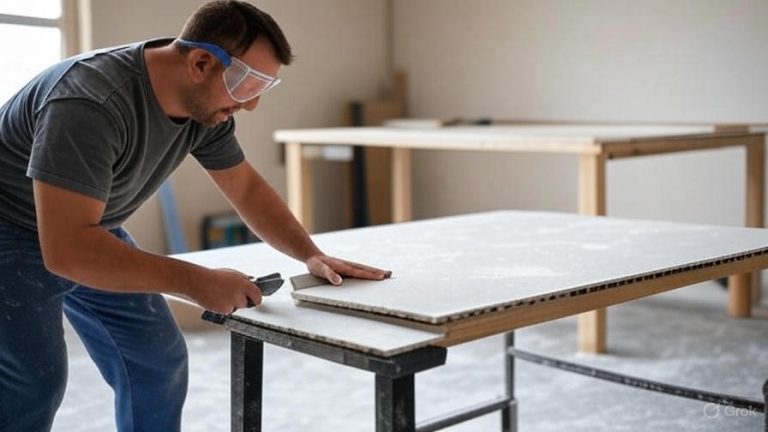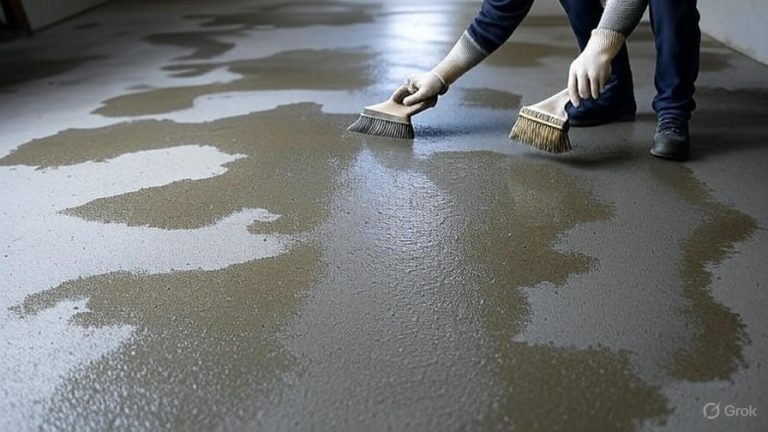How to Clean Bricks on a Fireplace?
Your fireplace serves as the heart of your home, creating warmth and ambiance during cold winter nights. However, after years of use, the brick surfaces can accumulate soot, creosote, and stains that diminish their natural beauty. Cleaning fireplace bricks requires specific techniques and materials to restore their original appearance while maintaining their structural integrity.
Why Fireplace Brick Cleaning Matters
Fireplace bricks face constant exposure to smoke, ash, and high temperatures. Over time, these elements create stubborn stains that regular household cleaners cannot remove. The porous nature of brick material means these contaminants penetrate deep into the surface, requiring specialized cleaning approaches.
Regular maintenance of your fireplace bricks serves multiple purposes. Clean bricks improve your home’s aesthetic appeal and increase property value. More importantly, removing built-up soot and creosote reduces fire hazards and improves indoor air quality. Neglected fireplace bricks can harbor harmful particles that circulate throughout your living space.
Essential Tools and Materials for Brick Cleaning
Before starting your cleaning project, gather the necessary supplies. You’ll need protective equipment including safety glasses, rubber gloves, and a dust mask. The cleaning process can generate airborne particles and involve harsh chemicals, making personal protection crucial.
Basic cleaning tools include stiff-bristled brushes, both large scrub brushes and smaller detail brushes for mortar joints. Plastic scrapers help remove stubborn deposits without damaging brick surfaces. Old rags, paper towels, and a vacuum cleaner with brush attachments complete your tool arsenal.
For cleaning solutions, you have several effective options. Dish soap mixed with warm water works for light cleaning tasks. Trisodium phosphate (TSP) provides stronger cleaning power for moderate stains. Muriatic acid offers the most aggressive cleaning action but requires extreme caution. Natural alternatives include white vinegar, baking soda, and cream of tartar.
Preparing Your Work Area
Start by removing all decorative items, fireplace screens, and grates from the firebox area. Lay drop cloths or plastic sheeting around the fireplace to protect floors and furniture from cleaning solutions and debris. Open windows and doors to ensure adequate ventilation, especially when using chemical cleaners.
Inspect the chimney damper and close it if possible to prevent debris from falling down during cleaning. Remove loose ash and debris using a small shovel and brush. Vacuum the fireplace interior thoroughly, paying special attention to corners and crevices where soot accumulates.
Check the condition of mortar joints between bricks. Damaged or crumbling mortar needs repair before cleaning to prevent water damage. Small cracks can worsen when exposed to cleaning solutions, so address these issues first.
Method 1: Basic Soap and Water Cleaning
For lightly soiled fireplace bricks, start with the gentlest cleaning method. Mix two tablespoons of liquid dish soap with one gallon of warm water in a large bucket. This solution effectively removes surface dirt and light soot buildup without harsh chemicals.
Dip a stiff brush into the soapy water and scrub the brick surface using circular motions. Work in small sections, starting from the top and moving downward. This approach prevents dirty water from dripping onto already-cleaned areas. Apply steady pressure but avoid aggressive scrubbing that could damage the brick texture.
Rinse each cleaned section immediately with clean water using a spray bottle or damp cloth. Soap residue left on brick surfaces can attract more dirt over time. Allow the bricks to air dry completely before assessing the results. This method works well for regular maintenance cleaning but may not remove heavy staining.
Method 2: Trisodium Phosphate (TSP) Treatment
TSP provides stronger cleaning action for moderate to heavy staining on fireplace bricks. Mix one cup of TSP with one gallon of hot water, stirring until completely dissolved. Always add TSP to water, not water to TSP, to prevent splashing.
Apply the TSP solution using a stiff brush, working in manageable sections. Allow the solution to sit on the brick surface for 10-15 minutes to penetrate stains and soften deposits. The alkaline properties of TSP break down soot and grease effectively.
Scrub the treated areas with firm, consistent pressure. Use a smaller brush to clean mortar joints and detailed areas where stains tend to concentrate. Rinse thoroughly with clean water, ensuring no TSP residue remains on the surface. Multiple rinses may be necessary to remove all cleaning solution.
Method 3: Natural Cleaning Solutions
Homeowners preferring chemical-free cleaning can use several natural alternatives. Create a paste using baking soda and water, applying it to stained areas and allowing it to sit for 30 minutes. The mild abrasive action helps lift embedded dirt while being gentle on brick surfaces.
White vinegar mixed with equal parts water creates an effective natural cleaner. Spray this solution on brick surfaces and let it work for 15-20 minutes before scrubbing. The acidic properties of vinegar dissolve mineral deposits and light staining.
Cream of tartar mixed with water forms another gentle cleaning paste. This natural acid works particularly well on rust stains and discoloration. Apply the paste, allow it to work for 20 minutes, then scrub and rinse thoroughly.
Tackling Stubborn Stains and Heavy Buildup
Some fireplace bricks develop stubborn stains that resist standard cleaning methods. For these challenging situations, you may need stronger approaches or specialized techniques. Heat stains, which appear as dark shadows on brick surfaces, often require multiple cleaning sessions.
Create a stronger cleaning solution by mixing one part muriatic acid with ten parts water. Always add acid to water, never water to acid, to prevent dangerous reactions. This solution effectively removes heavy soot buildup and mineral deposits but requires extreme caution.
Apply the acid solution using a acid-resistant brush, working in small sections. Keep the application time brief, typically 3-5 minutes, to prevent brick damage. Neutralize the acid immediately after cleaning by rinsing with a baking soda solution (one cup baking soda per gallon of water), followed by thorough water rinsing.
Cleaning Mortar Joints and Detail Work
Mortar joints between bricks require special attention during cleaning. These recessed areas trap soot and debris, creating dark lines that detract from the overall appearance. Use a smaller, stiff-bristled brush or an old toothbrush to clean these narrow spaces effectively.
Apply your chosen cleaning solution to mortar joints and allow extra dwell time for penetration. Scrub along the joint lines with firm pressure, being careful not to damage the mortar material. Old or soft mortar can crumble under aggressive cleaning, requiring professional repair.
For extremely stubborn mortar stains, create a thick paste using powdered cleanser and water. Apply this paste to the joints and let it work for 15-20 minutes before scrubbing. The abrasive action helps remove embedded particles without excessive pressure.
Removing Specific Types of Stains
Different types of stains require targeted cleaning approaches. Soot stains, the most common fireplace brick problem, respond well to TSP solutions or commercial soot removers. Apply the cleaner and allow adequate dwell time before scrubbing.
Water stains and mineral deposits create white, chalky marks on brick surfaces. These efflorescence stains require acidic cleaners for effective removal. Vinegar solutions or mild muriatic acid treatments dissolve these mineral deposits effectively.
Rust stains from metal fireplace components create reddish-brown discoloration. Oxalic acid (wood bleach) works well for rust removal. Apply according to manufacturer directions and rinse thoroughly after treatment.
Post-Cleaning Care and Maintenance
After cleaning your fireplace bricks, proper drying is essential. Allow surfaces to air dry completely, which may take 24-48 hours depending on humidity and ventilation. Forced air circulation using fans can speed the drying process.
Inspect the cleaned bricks for any damage that occurred during cleaning. Small chips or cracks should be repaired promptly to prevent water infiltration and freeze damage. Document the cleaning date and methods used for future reference.
Consider applying a brick sealer after cleaning to protect against future staining and make subsequent cleaning easier. Sealers create a barrier that prevents deep penetration of soot and other contaminants while maintaining the natural appearance of brick.
Preventive Measures for Long-Term Maintenance
Regular fireplace maintenance significantly reduces the frequency and intensity of brick cleaning required. Schedule annual chimney inspections and cleanings to remove creosote buildup before it affects brick surfaces. Professional chimney services can identify potential problems early.
Install a chimney cap to prevent water infiltration and reduce debris accumulation. Proper ventilation ensures complete combustion, reducing soot production that stains brick surfaces. Use only seasoned hardwoods for fires, as green or softwood creates more smoke and residue.
Clean glass doors regularly to improve combustion efficiency and reduce smoke production. Replace worn door gaskets to maintain proper sealing. These simple maintenance steps protect your fireplace investment and reduce cleaning requirements.
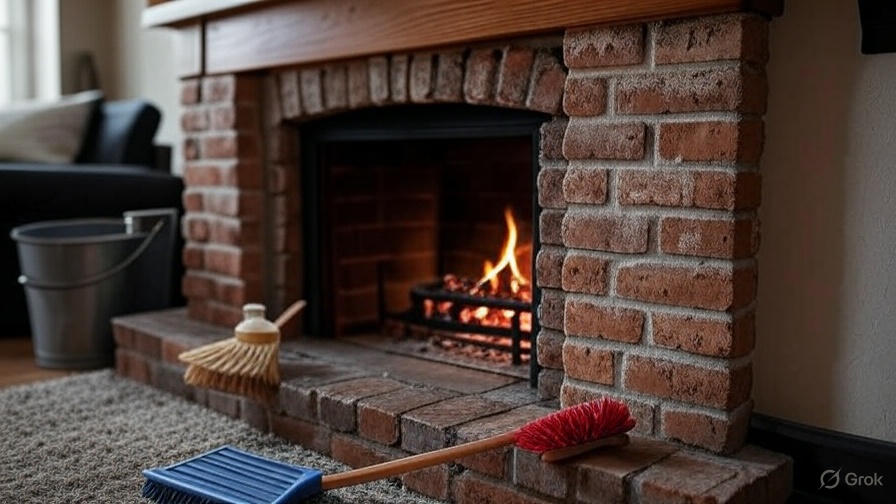
Safety Considerations and Warnings
Fireplace brick cleaning involves several safety hazards that require careful attention. Chemical cleaners can cause skin and eye irritation, making protective equipment essential. Work in well-ventilated areas to avoid inhaling fumes or particles.
Never mix different cleaning chemicals, as dangerous reactions can occur. Store cleaning materials safely away from children and pets. Dispose of used cleaning solutions according to local environmental regulations.
Test any cleaning solution on a small, inconspicuous area before applying it to the entire surface. Some cleaning methods can cause permanent discoloration or damage to certain types of brick or mortar.
When to Call Professional Services
Some fireplace brick cleaning situations require professional expertise. Extensive damage, structural concerns, or valuable antique bricks warrant professional assessment. Commercial cleaning services have specialized equipment and experience handling challenging cleaning projects.
Professional services become necessary when cleaning attempts fail to achieve desired results or when safety concerns arise. They can assess brick condition, recommend appropriate cleaning methods, and perform repairs if needed.
Historic homes or fireplaces with unique architectural features may require specialized cleaning techniques that preserve their historical integrity. Professional restoration experts understand these requirements and can clean effectively without causing damage.
Conclusion
Cleaning fireplace bricks transforms your hearth from a sooty, stained eyesore into a beautiful focal point that enhances your home’s appeal. The process requires patience, proper materials, and attention to safety, but the results justify the effort involved.
Start with gentle cleaning methods and progress to stronger solutions only when necessary. Regular maintenance prevents heavy buildup and makes future cleaning easier. With proper care and occasional deep cleaning, your fireplace bricks will provide years of beauty and enjoyment.
Remember that fireplace maintenance extends beyond just cleaning bricks. Regular inspections, proper fuel usage, and professional chimney services ensure safe operation while preserving your investment. Take pride in maintaining this important feature of your home, and enjoy the warmth and ambiance it provides for years to come.

